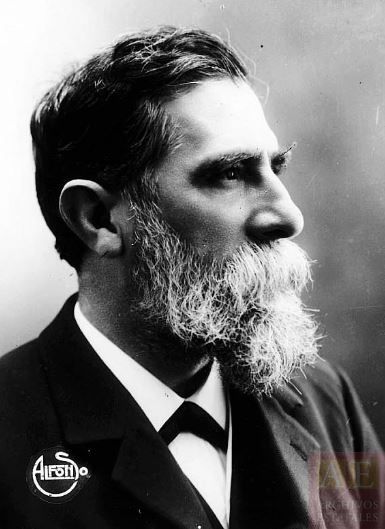 Persona - Bretón, Tomás (1850-1923)
Persona - Bretón, Tomás (1850-1923)
Identificación
Tipo:
Persona
Forma autorizada:
Bretón, Tomás (1850-1923)Otras formas
Fechas de existencia:
Salamanca 1850-12-29 - Madrid (España) 1923-12-02
Historia:
Compositor, director y profesor español.
Nació el 29 de diciembre de 1850 en Salamanca y falleció el 2 de diciembre de 1923 en Madrid. Hijo de Antonio Bretón Hernández y de Andrea Hernández Rodríguez. Comenzó sus estudios musicales de violín y solfeo en la Escuela de Nobles y Bellas Artes de San Eloy bajo la tutela de Ángel Piñuela. En 1865 se trasladó a Madrid junto a su familia. Allí empezó como violinista en el Teatro Variedades y más tarde como concertino y director de la orquesta del Circo Price. Estudió en el Conservatorio con Aranguren y Arrieta, finalizó sus estudios en 1872 y obtuvo el primer premio de Composición junto a Ruperto Chapí. Durante estos años compuso "Cuarteto en Sol Mayor" (1866) y "Sinfonía nº 1 en Fa Mayor" (1872). Desde 1873 trabajó para diferentes compañías de zarzuelas. Realizó un primer intento de ópera en 1876 sobre el libreto de Antonio Arnao, titulado "Guzmán el Bueno", obra que se estrenó en el Teatro Apolo y en el Gran Teatro del Liceo de Barcelona. Fundó en 1878 la orquesta Unión Artístico-Musical y la dirigió hasta 1882.
En 1880 se casó con Dolores Matheu, con quien tuvo cuatro hijos, llegando a la edad adulta Antonio Mario, María y Abelardo. Abelardo y Antonio Mario Bretón Matheu siguieron la carrera musical paterna. Su nieto Luis Hernández Bretón también fue compositor de bandas sonoras en México.
Consiguió en 1881 la plaza de mérito en la Academia de Bellas Artes de Roma, ciudad a la que se trasladó con su familia. Allí estudió la polifonía renacentista, compuso el oratorio "El Apocalipsis". y conoció a Francisco Padilla y Cleto Zabala. En 1882 se mudó a Viena y un año más tarde se trasladó a París, donde se centró en su ópera "Los amantes de Teruel". Volvió a Madrid y fue director de la Sociedad de Conciertos hasta 1890. En 1889 estrenó "Los amantes de Teruel", obra que previamente había generado polémica y que obtuvo un gran éxito. Con "La verbena de la Paloma" realizó su incursión en el género chico, un sainete con libreto de Ricardo de la Vega, que se estrenó en el Teatro Apolo en 1894; obra que marcó su carrera compositiva y donde aglutinó multitud de estilos musicales. En 1895 estrenó "La Dolores" en el Teatro de la Zarzuela, ópera de carácter realista y basada en el escrito de Feliú y Codina; obra de éxito y difusión incomparables a sus anteriores composiciones. Durante los siguientes años siguió componiendo obras para el género chico, zarzuela grande y ópera. Fue nombrado académico de la Academia de Bellas Artes de San Fernando en 1896 y comisario regio del Conservatorio de Música de Madrid en 1901. Compuso también varias obras para agrupaciones de cámara, como "Cuarteto en Re Mayor" (1904) o "Cuatro piezas españolas" (1909), así como obras sinfónicas, atendiendo a la nueva demanda musical de inicios del siglo XX. En 1917, tras el fallecimiento de su mujer, compuso un poema sinfónico, "Elegía y añoranzas", en homenaje a ella.
Contexto:
El archivo personal de Tomás Bretón se conserva en la Biblioteca Nacional de España (BNE) y contiene toda su producción musical, libretos, prensa, parte de su biblioteca personal y algunos manuscritos.
Lugares
Lugar de Nacimiento:
Lugar de Defunción:
Fuentes
Relaciones
Relaciones asociativas :
Relaciones familiares :
Enlaces Externos
Bibliografía:
Biografía:
Recurso Web:
Catálogo de Autoridades:
Fichero de Autoridades:
Fichero de Autoridades:
Documentos
Productor de:
- No hay Unidades de Descripción asociadas.






